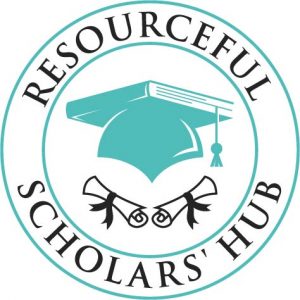As a PhD student, you will be required to attend and present at various scientific conferences. One challenge facing many graduate students is how to write and submit a conference abstract that is accepted by the conference scientific committee. In this article, I will cover various tips for writing and submitting different types of conference abstracts.
What is a conference abstract?
A conference abstract is a summary of research work that a student or professional submits to a conference in order to present it to the conference delegates.
Each conference has its limits on the length of the abstracts that should be submitted but it ranges from 400 words to 700 words in most cases.
The conference abstract captures the key aspects of the research that the student/professional wants to present. Given the limitations on the word count, what is included in the conference abstract needs to be thought through carefully so as to increase the chances of the abstract being accepted.
Types of abstracts for scientific conferences
There are two main types of abstracts that can be submitted for a scientific conference:
Individual abstracts: these are abstracts for conference presentations that are to be presented by individuals.
Abstracts for organised sessions: these are abstracts for conference presentations that are to be presented by a group of individuals together.
Factors to consider before writing and submitting conference abstracts
For individual abstracts:
They should not have been presented or published elsewhere prior.
They should be aligned with the target reach of the conference. If the conference is an international conference, the abstract should be global in nature. If the conference is a local/national conference, the abstract should address local/national issues.
They should be aligned with the theme of the conference. It is important for the submitter to go through the main theme and sub-themes of the conference and write and submit an abstract that easily fits into the theme and one of the sub-themes.
They should meet the basic requirements for the conference. The submitter should go through the instructions provided by the conference organizers before writing and submitting an abstract. The instructions cover aspects such as the length of the abstract, the format for the abstract (whether Word or PDF), the language(s) that should be used for the abstract, and basic details of the submitter. Adhering to these instructions is vital for increasing the chances of the abstracts being accepted by the Scientific Committee.
Each abstract should have clarity on what it is addressing: it should only address one research question and not many research questions. This helps the presenter to remain laser-focused on his presentation.
For organised sessions:
In addition to the above factors for individual abstracts, the submitters of the organised sessions should start the process early. This is because an abstract for organised sessions involves 3-5 authors and presenters hence reaching out to potential authors/presenters will require adequate time.
The abstracts for the organised session should be related to each other, for instance, each abstract can be on a different aspect of the same research; or each abstract can address a different setting in which the same study was conducted.
The submitter should be clear on who the contact author is and provide the requested contact details. This helps in communication between the conference organizers and the presenters.
Format for writing a conference abstract
A conference abstract should have the following five key sections:
Title
The title is the first thing the abstract reviewer will see on the submission platform before he even opens the abstract. As a result, the title should be catchy enough to wet the appetite of the reviewer to open and read the abstract.
The title should also be relevant to the conference and should speak to the conference theme and one of the sub-themes.
The title of the conference abstract should also provide clarity on what the presentation will be about.
The background/introduction section
In this section, the author should begin by stating what the research issue is and then describe the current state of the issue being addressed.
The section also includes the research gap, that is, what is already known about the research issue and what remains unknown about it and how the research will help address the gap.
Lastly, the section should end with the aim of the research.
The methods section
This section highlights the research design and approaches that were adopted in the study as well as the study population, study sample including sample size and sampling technique that was used to obtain the sample, the study setting, the data type and data collection techniques that were used, and lastly the data analysis software and techniques that were used.
The author should be clear and precise on the procedures he used in carrying out his study.
The results section
In this section, the key findings from the research are highlighted. Given the limitation in word count for most conference abstracts, only the relevant results that address the research question should be discussed.
In some cases, the author may have not finished the data collection process. In this case, the socio-demographic information of the study participants and the preliminary findings can be discussed.
The conclusion section
This section sums up the study.
Rather than replicating what has been written in the previous sections, the author should highlight the main contribution of the study to the body of knowledge and also propose additional areas for discussion that would enrich the conference deliberations.
The above 5-sections’ format should be followed for individual abstracts as well as for the abstracts that are written for an organised session. However, for organised sessions, an additional session summary is usually required that provides the topic for the session, an overall summary for the session, as well as the session’s presenters and their individual abstracts. In addition, the session summary includes information about the session moderator.
Additional tips for submitting conference abstracts
Before submitting an abstract, it is advisable for the authors to receive feedback from established researchers in their research fields. Feedback helps to improve the abstract and increase the chances of acceptance by the Scientific Committee.
It is also important to proof-read the abstract a few times before submitting to ensure the abstract is without grammatical errors.
The organiser of organised sessions should make sure that all the authors of the session are OK with their submission.
Always submit the abstract at least two days before the deadline. This creates room for technical hitches that are bound to arise especially when there is huge traffic to the conference management system as the deadline nears. Submitting early also allows for re-submission when the need for it arises.
The submitter of the conference should always check for confirmation email after abstract submission. This is proof that the submission in the system was successful.
Final thoughts
Scientific conferences are a great avenue for PhD students and researchers to get feedback on their research work from their peers and senior researchers. In order for their abstracts to be accepted, they should be keen on following the instructions provided for writing and submitting their conference abstracts. This post has provided some useful tips and guides on how to write and submit conference abstracts both for individual abstracts and for organised sessions.

